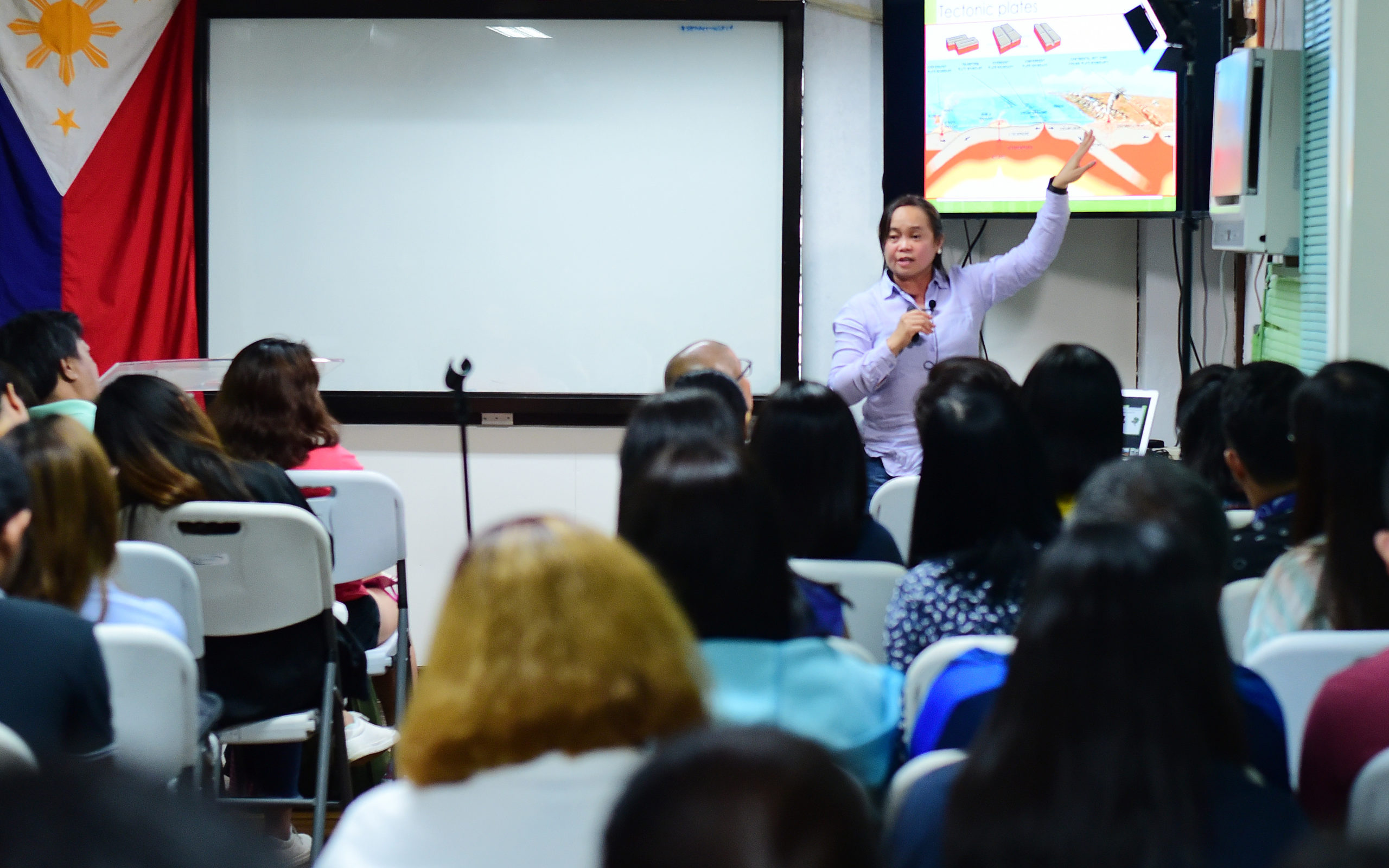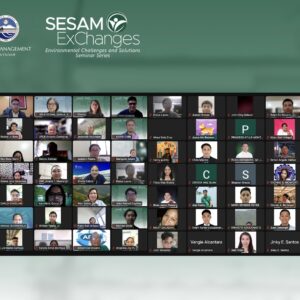Colliding Plates Created Volcanoes in the Philippines
Convergent boundaries, where plates collide into each other, formed most of the volcanoes in the country, according to Dr. Decibel F. Eslava, Dean of SESAM and UP Scientist III.
In her lecture under the “Living Dangerously” Series in February 20, 2020 at the School of Environmental Science Management-University of the Philippines Los Baños, Dr. Eslava said there are 24 active volcanoes in the Philippines, mostly formed by oceanic-oceanic convergent boundaries. This is when the oceanic crust subducts under another oceanic crust, creating pressure that pushes the magma upward producing volcanic eruptions.
Dr. Eslava, who earned her PhD degree in Geology at the University of Hong Kong, said the Philippines was formed by two terranes, namely the Sundaland/Eruasian/Palawan Continental Block and the Philippine Mobile Belt. Sundaland has older materials and came from Southern Asia, while the Philippine Mobile Belt has younger volcanic belts and a tectonically active zone. Majority of the active volcanoes in the country are located in this zone.
“After the Pinatubo eruption in 1991, volcanologists never used the term ‘dormant’ anymore”, Dr. Eslava said. Before the 1991 eruption, Mt. Pinatubo is heavily forested mountain, with no historical account of any eruptions. Thus, she added, volcanologists now created three classifications– active, potentially active and inactive volcanoes.
Active volcanoes are those with recorded eruptions in the past 10,000 years, such as Taal and Mayon. Meanwhile, potentially active volcanoes are geomorphologically young, such as Mt. San Cristobal of the Mt. Banahaw Complex. Inactive volcanoes on the other hand are deeply weathered edifices, such as Mt. Makiling.
The types of volcanoes are also based on their forms and types of eruptions produced. Shield volcanoes are large, broad volcanoes with a wide base, for example are Hawaiian volcanoes, Mouna Loa and Mauna Kea. The composite cone or stratovolcanoes are the most common form of volcanoes. The best example is the conical Mayon Volcano. Another type is the cinder cone, which is usually a ‘one-shot volcano’ or only erupted once. An example of a cinder cone is the eroded and quarried hill located in Pansol, Calamba.
As for eruption types, volcanologists named some categories based on the characteristics of well-known volcanoes around the world. The least explosive type is called Hawaiian, which has less than 2 km plume height. It is usually a non-violent lava flow eruption. Meanwhile the Strombolian type, with a plume of 10 km or less, is a lava-fountaining eruption, named after the Italian volcano Stromboli, found in the Mediterranean Sea. Another type is the Surtseyan, with an ash plume height of 20 km or less, was named after Surtsey volcano in Iceland. Bigger eruptions such as Plinian, has more than 55 km of plume height. An example is the 1991 Mt. Pinatubo eruption.
Dr. Eslava said it is important to further study volcanoes so scientists can make more accurate predictions. It entails using many technologies and data from remote sensing, seismicity, ground deformation, hydrology, gas and geophysical measurements.
Most Taal eruptions in the past were violent with thousands of casualties, according to Dr. Eslava. But with further monitoring, volcanologists will better understand Taal’s characteristics and help the decision-making of officials in relation to disaster risk reduction and management, as well as in the information dissemination to the community.







